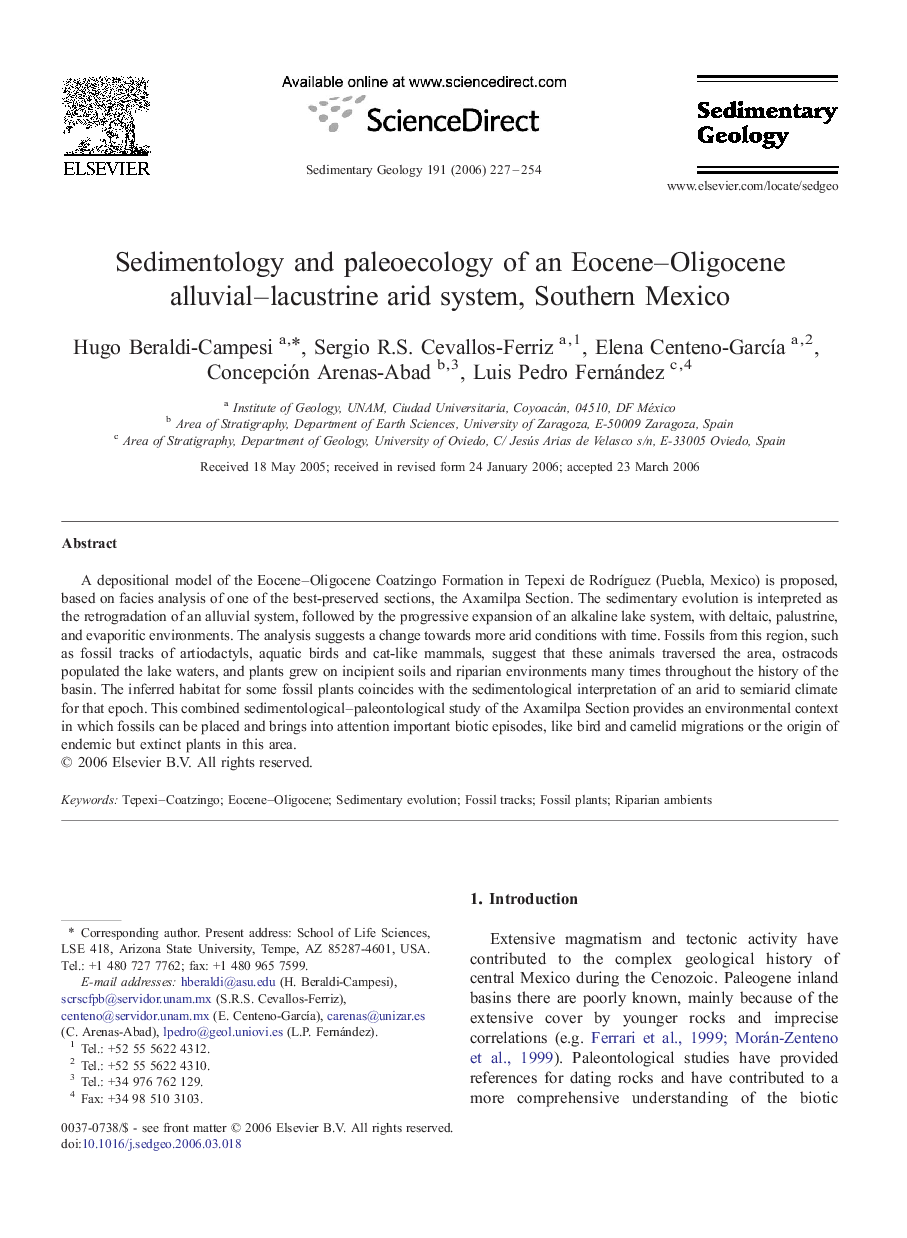| Article ID | Journal | Published Year | Pages | File Type |
|---|---|---|---|---|
| 4691015 | Sedimentary Geology | 2006 | 28 Pages |
A depositional model of the Eocene–Oligocene Coatzingo Formation in Tepexi de Rodríguez (Puebla, Mexico) is proposed, based on facies analysis of one of the best-preserved sections, the Axamilpa Section. The sedimentary evolution is interpreted as the retrogradation of an alluvial system, followed by the progressive expansion of an alkaline lake system, with deltaic, palustrine, and evaporitic environments. The analysis suggests a change towards more arid conditions with time. Fossils from this region, such as fossil tracks of artiodactyls, aquatic birds and cat-like mammals, suggest that these animals traversed the area, ostracods populated the lake waters, and plants grew on incipient soils and riparian environments many times throughout the history of the basin. The inferred habitat for some fossil plants coincides with the sedimentological interpretation of an arid to semiarid climate for that epoch. This combined sedimentological–paleontological study of the Axamilpa Section provides an environmental context in which fossils can be placed and brings into attention important biotic episodes, like bird and camelid migrations or the origin of endemic but extinct plants in this area.
